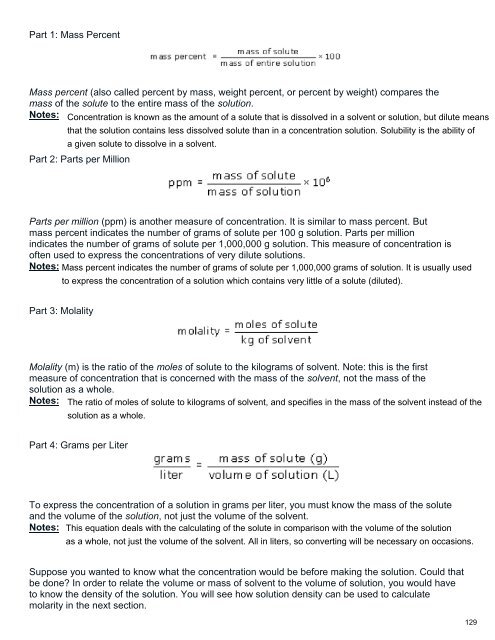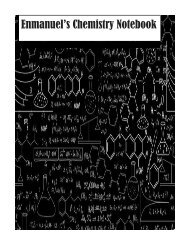Create successful ePaper yourself
Turn your PDF publications into a flip-book with our unique Google optimized e-Paper software.
Part 1: Mass Percent<br />
Mass percent (also called percent by mass, weight percent, or percent by weight) compares the<br />
mass of the solute to the entire mass of the solution.<br />
Notes:<br />
Part 2: Parts per Million<br />
Parts per million (ppm) is another measure of concentration. It is similar to mass percent. But<br />
mass percent indicates the number of grams of solute per 100 g solution. Parts per million<br />
indicates the number of grams of solute per 1,000,000 g solution. This measure of concentration is<br />
often used to express the concentrations of very dilute solutions.<br />
Notes:<br />
Part 3: Molality<br />
Molality (m) is the ratio of the moles of solute to the kilograms of solvent. Note: this is the first<br />
measure of concentration that is concerned with the mass of the solvent, not the mass of the<br />
solution as a whole.<br />
Notes:<br />
Part 4: Grams per Liter<br />
To express the concentration of a solution in grams per liter, you must know the mass of the solute<br />
and the volume of the solution, not just the volume of the solvent.<br />
Notes:<br />
Suppose you wanted to know what the concentration would be before making the solution. Could that<br />
be done? In order to relate the volume or mass of solvent to the volume of solution, you would have<br />
to know the density of the solution. You will see how solution density can be used to calculate<br />
molarity in the next section.




